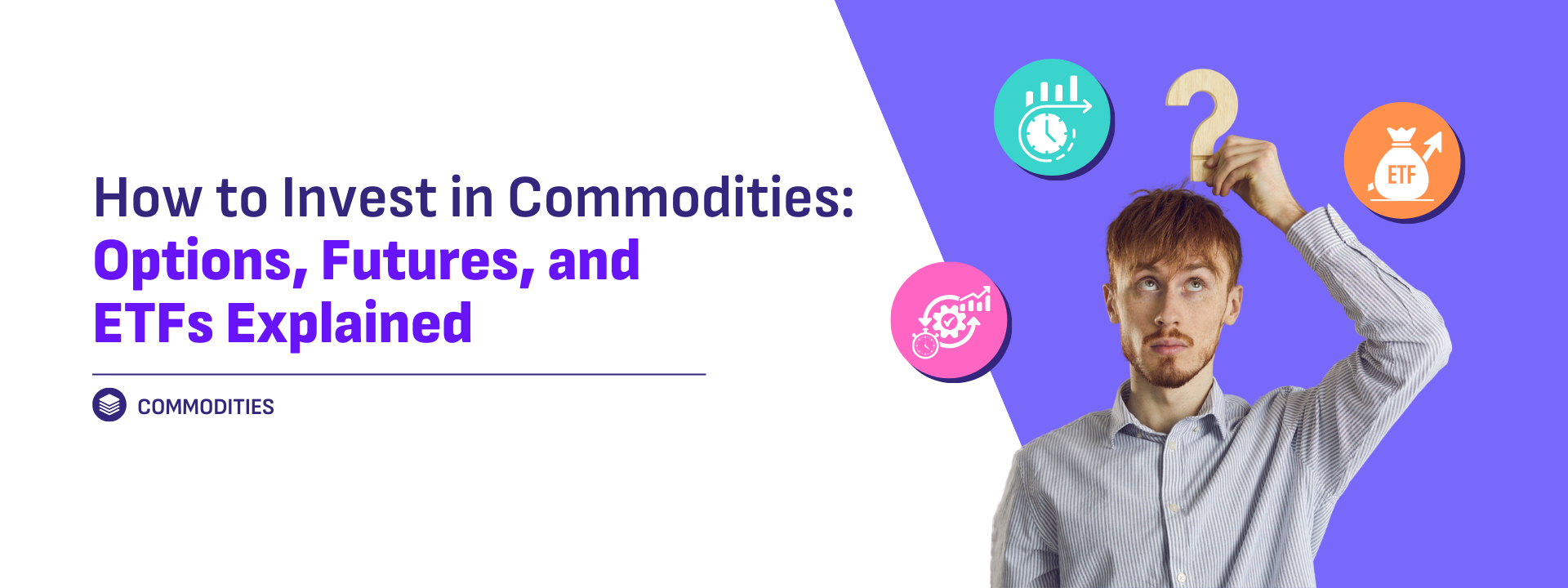

How to Invest in Commodities: Options, Futures, and ETFs Explained
Introduction
Investing in commodities offers a way to diversify your portfolio, hedge against inflation, and potentially capitalize on price movements in raw materials and primary products. There are several investment vehicles available for those interested in commodities, each with its own characteristics, risks, and benefits. This guide explores three primary methods for investing in commodities: futures contracts, options, and exchange-traded funds (ETFs).
Futures Contracts
Overview:
Futures contracts are agreements to buy or sell a specific quantity of a commodity at a predetermined price on a future date. These contracts are standardized and traded on commodity exchanges such as the Chicago Mercantile Exchange (CME) and the Intercontinental Exchange (ICE).
Key Features:
- Leverage: Futures contracts often involve leverage, allowing investors to control a large position with a relatively small amount of capital. This can amplify both gains and losses.
- Contract Size: Each futures contract represents a specific amount of the underlying commodity (e.g., 1,000 barrels of oil or 5,000 bushels of wheat).
- Settlement: Futures contracts can be settled either by physical delivery of the commodity or by cash settlement, depending on the contract and the investor’s preference.
Benefits:
- Liquidity: Futures markets are highly liquid, meaning there is often a large volume of trading activity, which facilitates buying and selling.
- Hedging: Futures contracts are commonly used by producers and consumers to hedge against price fluctuations and manage risk.
- Speculation: Investors use futures contracts to speculate on price movements of commodities, aiming to profit from changes in market prices.
Risks:
- Volatility: Futures markets can be highly volatile, and leverage can magnify losses.
- Complexity: Futures trading requires a good understanding of the markets, contract specifications, and margin requirements.
Options Contracts
Overview:
Options contracts give investors the right, but not the obligation, to buy or sell a commodity at a specified price (strike price) before or at the expiration date. Options can be used in conjunction with futures contracts or on their own.
Key Features:
- Call Options: Give the holder the right to buy the underlying commodity at the strike price.
- Put Options: Give the holder the right to sell the underlying commodity at the strike price.
- Premium: Investors pay a premium to purchase an option, which represents the cost of acquiring the right to buy or sell the commodity.
Benefits:
- Limited Risk: The maximum loss is limited to the premium paid for the option, making it a more controlled way to speculate or hedge.
- Flexibility: Options provide flexibility in constructing trading strategies, such as covered calls or protective puts.
- Leverage: Like futures, options can offer leverage, allowing investors to control a large position with a smaller investment.
Risk:
- Premium Costs: If the market does not move as anticipated, the premium paid for the option may be lost.
- Complexity: Options trading can be complex, requiring knowledge of various strategies and the impact of factors like volatility and time decay.
Exchange-Traded Funds (ETFs)
Overview:
- Speculative Trading: Speculators play a significant role in commodity markets by buying and selling contracts based on anticipated price movements. Their activities can lead to price volatility and affect market stability. For example, speculative buying in anticipation of rising oil prices can drive prices up, even if the underlying supply and demand conditions remain unchanged.
- Market Sentiment Indicators: Traders often use sentiment indicators, such as futures positions and market surveys, to gauge investor sentiment. Positive sentiment can drive prices higher, while negative sentiment can lead to declines.
Key Features:
- Physical Commodity ETFs: Hold physical assets such as gold or silver, providing direct exposure to the underlying commodity.
- Futures-Based ETFs: Invest in futures contracts to gain exposure to commodities. These ETFs may experience tracking errors due to the rolling of contracts.
- Basket ETFs: Track a diversified index of commodities, offering exposure to multiple commodities within a single fund.
Benefits:
- Diversification: Commodity ETFs allow investors to gain exposure to a broad range of commodities or a specific commodity with a single investment.
- Liquidity: ETFs trade on stock exchanges, offering liquidity and ease of access similar to stocks.
- Transparency: ETFs typically provide transparent pricing and holdings, making it easier for investors to understand their investments.
Risk:
- Tracking Errors: Futures-based ETFs may not perfectly track the price of the underlying commodity due to factors like contango or backwardation in the futures market.
- Expense Ratios: ETFs charge management fees and other expenses, which can impact overall returns.
- Market Risk: Like other securities, ETFs are subject to market risk and price fluctuations.
Summary
Investing in commodities can enhance portfolio diversification and provide opportunities for profit. Understanding the different investment vehicles—futures contracts, options, and ETFs—allows investors to select the approach that best aligns with their investment goals, risk tolerance, and market outlook. Each method offers unique benefits and risks, so it’s essential to conduct thorough research and consider consulting with a financial advisor before diving into commodity investments.


